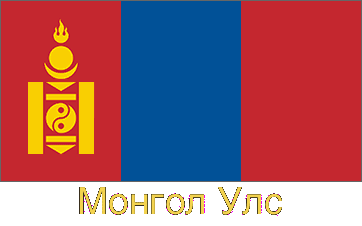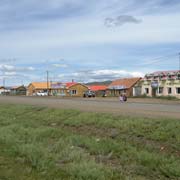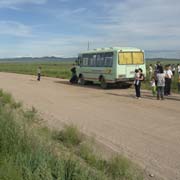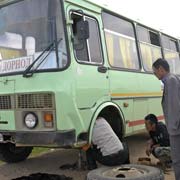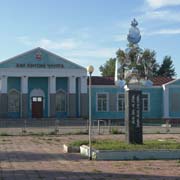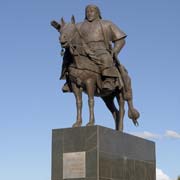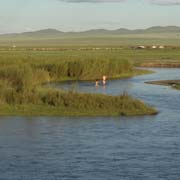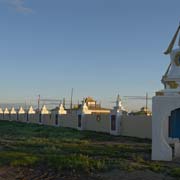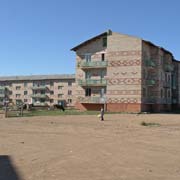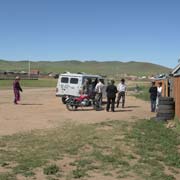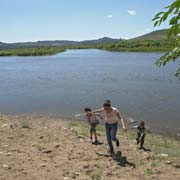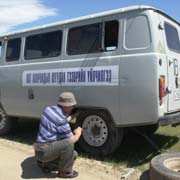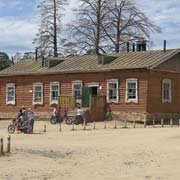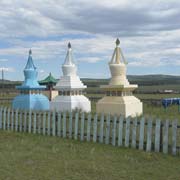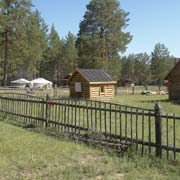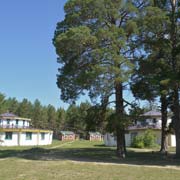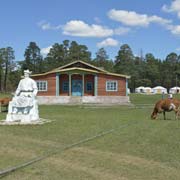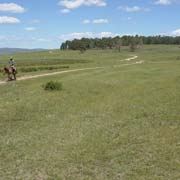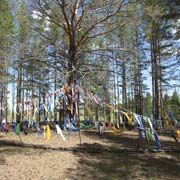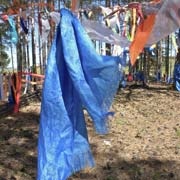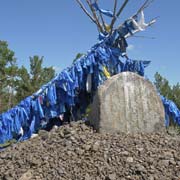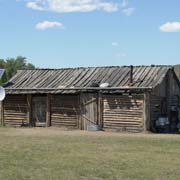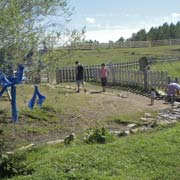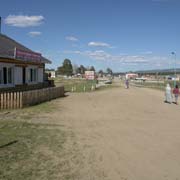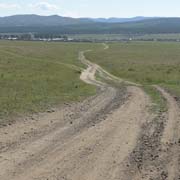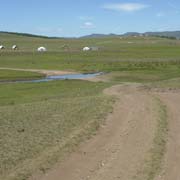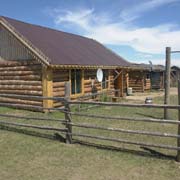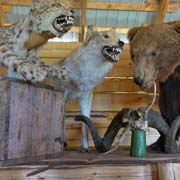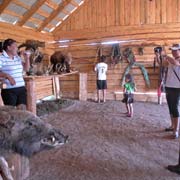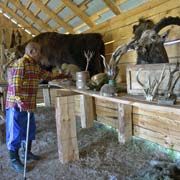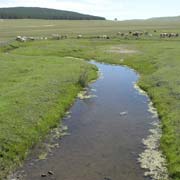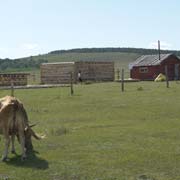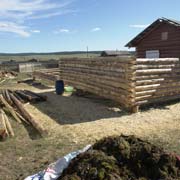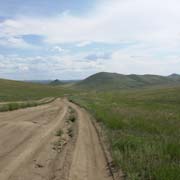Photos of Khentii Province, Mongolia
Khentii Province
Khentii aimag, named after the Khentii Mountains, is located in the east, bordering Russia in the north. It has an area of 80,325 km² and a population of around 70,000, mainly Khalkha Mongols, but with a minority of Buriad (Buryat) people in the north.
you may then send it as a postcard if you wish.
The birthplace of Temüjin, or Genghis Khan, is Deluun Boldog, about 3.5 kilometres north of the village of Dadal. On the hill is a monument built in 1990, commemorating the 750th anniversary of the writing of “The Secret History of the Mongols”. The inscription, in classical Mongolian script, states that in 1162 Chinggis Khaan was born there.
Dadal is a pleasant place with mainly Buriad people who live in log huts rather than gers. There are rivers, lakes and forests. Apart from Genghis Khan’s birthplace, Deluun Boldog, there is Khajuu Bulag, a mineral water spring, where he is supposed to have drunk. About 5 kilometres from Dadal was the home of Zundui Dagva, a hunter in his nineties who had filled his Hunting Museum with many stuffed animals he shot, including snow leopard, wolf and bear.
Its capital is Öndörkhaan, a small town with on its southern part the Kherlen river with a recently renovated Buddhist Monastery nearby. Another monastery, Shadavdarjaliin Khiid, was initially built in 1660 and housed up to 1000 monks. In 1938, during the terror of the purges, all monks were arrested and eventually, in the 1950s, the buildings were demolished. It has now been rebuilt and houses about 15 monks. Öndörkhaan has an Ethnography Museum housed inside the 18th-century home of the Tsetseg Khaan, a Mongolian prince who governed most of eastern Mongolia during the Manchu reign. There is a beautiful ceremonial ger with excellent wood furnishings. Nearby is a statue of Genghis Khan and a small Aimag Museum.


